-
 Bitcoin
Bitcoin $107,341.7259
0.15% -
 Ethereum
Ethereum $2,438.6204
0.70% -
 Tether USDt
Tether USDt $1.0003
-0.02% -
 XRP
XRP $2.1866
1.94% -
 BNB
BNB $649.0952
0.36% -
 Solana
Solana $150.9602
5.63% -
 USDC
USDC $0.9999
0.00% -
 TRON
TRON $0.2742
0.40% -
 Dogecoin
Dogecoin $0.1645
1.93% -
 Cardano
Cardano $0.5669
1.18% -
 Hyperliquid
Hyperliquid $37.8286
4.19% -
 Bitcoin Cash
Bitcoin Cash $491.4669
-2.74% -
 Sui
Sui $2.8150
3.06% -
 Chainlink
Chainlink $13.4184
2.91% -
 UNUS SED LEO
UNUS SED LEO $9.0809
0.27% -
 Avalanche
Avalanche $18.0295
2.60% -
 Stellar
Stellar $0.2396
1.19% -
 Toncoin
Toncoin $2.8587
0.13% -
 Shiba Inu
Shiba Inu $0.0...01160
2.59% -
 Litecoin
Litecoin $86.4192
1.45% -
 Hedera
Hedera $0.1486
1.19% -
 Monero
Monero $308.4324
0.87% -
 Polkadot
Polkadot $3.4202
1.43% -
 Bitget Token
Bitget Token $4.6436
-0.34% -
 Dai
Dai $0.9998
-0.02% -
 Ethena USDe
Ethena USDe $1.0002
0.00% -
 Uniswap
Uniswap $7.1527
3.29% -
 Pi
Pi $0.5357
-8.45% -
 Pepe
Pepe $0.0...09588
4.61% -
 Aave
Aave $259.9759
0.81%
What is a stablecoin? What is the difference between USDT and USDC?
USDT and USDC, popular stablecoins pegged to the US dollar, differ significantly in transparency; USDC boasts regular audits, while USDT's auditing has faced criticism, impacting user trust and risk assessment.
Mar 11, 2025 at 06:20 pm
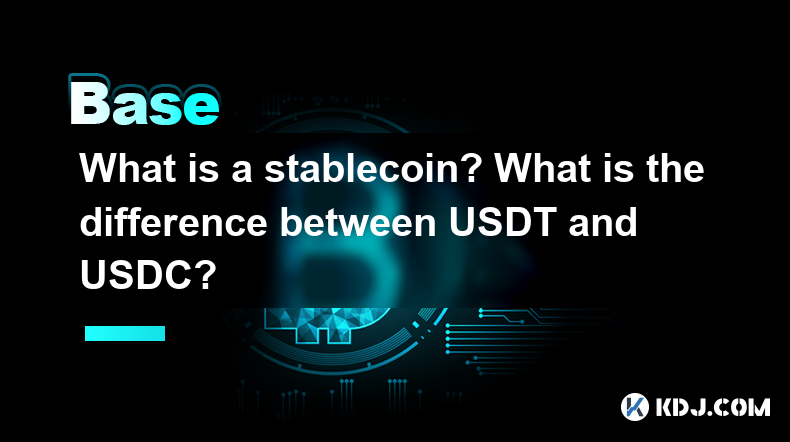
Key Points:
- Stablecoins are cryptocurrencies designed to maintain a stable value, usually pegged to a fiat currency like the US dollar.
- USDT (Tether) and USDC (USD Coin) are two of the most popular stablecoins, but they differ in their underlying mechanisms and auditing transparency.
- Choosing between USDT and USDC depends on individual risk tolerance and priorities regarding transparency and regulatory compliance.
What is a Stablecoin?
A stablecoin is a type of cryptocurrency designed to minimize volatility. Unlike Bitcoin or Ethereum, whose prices fluctuate significantly, stablecoins aim to maintain a relatively stable value, typically pegged to a reserve asset like the US dollar, the Euro, or even gold. This stability makes them useful for various purposes within the cryptocurrency ecosystem, acting as a bridge between volatile cryptocurrencies and the more stable world of fiat currencies. They facilitate easier transactions and reduce the risk associated with price swings. However, it's crucial to understand that even stablecoins can experience price fluctuations, though ideally these are minor and temporary.
How Do Stablecoins Maintain Stability?
Different stablecoins employ various mechanisms to maintain their peg. Some are backed by fiat currency reserves held in bank accounts, while others use algorithmic approaches or are backed by other cryptocurrencies. The most common approach is to hold a 1:1 reserve of the fiat currency, meaning for every one stablecoin in circulation, one unit of the underlying asset is held in reserve. This is the approach used by many prominent stablecoins, although the transparency and auditing of these reserves vary considerably. The method used directly impacts the trustworthiness and stability of the coin.
USDT (Tether): A Deep Dive
Tether (USDT) is one of the oldest and most widely used stablecoins. It's pegged to the US dollar and claims to maintain a 1:1 reserve. However, USDT has faced significant scrutiny regarding the transparency of its reserves and the nature of its backing. Auditing has been a contentious issue, leading to concerns about its true stability and potential risks. Despite these controversies, its widespread adoption makes it a prominent player in the cryptocurrency market. Understanding these controversies is crucial before investing in or using USDT.
USDC (USD Coin): A Closer Look
USD Coin (USDC) is another popular stablecoin pegged to the US dollar. Unlike USDT, USDC undergoes regular audits by reputable accounting firms, providing greater transparency regarding its reserves. This increased transparency aims to build trust and confidence among users. While not entirely free from risk, USDC's commitment to regular audits and its relatively more transparent approach makes it a preferred option for many users seeking a more stable and trustworthy stablecoin. The auditing process enhances the credibility of the coin's value.
Key Differences Between USDT and USDC
The primary difference between USDT and USDC lies in their transparency and auditing practices. USDC consistently undergoes independent audits, offering greater assurance about the backing of its tokens. USDT, on the other hand, has faced significant criticism regarding its auditing process and the nature of its reserves, raising concerns about its long-term stability. This difference in transparency is a major factor for investors choosing between the two. Regulatory scrutiny also plays a significant role, with USDC generally facing less controversy.
Transparency and Auditing: A Crucial Factor
The level of transparency and the frequency of independent audits are crucial factors when considering stablecoins. Regular and transparent audits provide a higher level of assurance that the stablecoin is adequately backed and maintains its peg. The lack of such transparency, as seen in some instances with USDT, can lead to distrust and potentially significant risks for investors. This is a key differentiator between these two leading stablecoins. Choose based on your comfort level with the level of transparency provided.
Regulatory Landscape and Compliance
The regulatory landscape for stablecoins is constantly evolving. Different jurisdictions have varying rules and regulations regarding stablecoins, and this can impact the availability and use of specific stablecoins within those regions. Both USDT and USDC are subject to these regulations, but their approaches to compliance might differ. Staying updated on regulatory developments is crucial for users of these stablecoins. Compliance with regulatory frameworks is a vital aspect of their operation.
Risk Assessment and Diversification
Even stablecoins carry inherent risks. While designed to minimize volatility, they are not entirely risk-free. Factors like the solvency of the reserve custodian, changes in regulations, and potential algorithmic flaws can all impact the stability of a stablecoin. Diversification across different stablecoins or asset classes can help mitigate these risks. It’s prudent to never put all your eggs in one basket, regardless of how stable it seems.
Choosing the Right Stablecoin: A Personal Decision
The choice between USDT and USDC ultimately depends on an individual's risk tolerance and priorities. Those prioritizing transparency and a robust audit trail might prefer USDC. Others might opt for USDT, despite its controversies, due to its widespread acceptance and liquidity. Consider your personal risk tolerance and the specific needs of your transaction before making a choice. Thorough research and understanding of the risks are crucial.
Frequently Asked Questions:
Q: Are stablecoins truly stable?
A: While designed for stability, stablecoins can experience minor fluctuations. The degree of stability depends heavily on the underlying mechanisms and the transparency of the reserves.
Q: What are the risks associated with using stablecoins?
A: Risks include counterparty risk (the risk of the issuer defaulting), algorithmic failures (for algorithmically-backed stablecoins), and regulatory changes.
Q: Are USDT and USDC regulated in the same way?
A: No, the regulatory landscape for stablecoins is complex and varies by jurisdiction. Both USDT and USDC are subject to different regulatory scrutiny levels in various regions.
Q: Which stablecoin is better, USDT or USDC?
A: There is no single "better" stablecoin. The best choice depends on your priorities regarding transparency, auditability, and risk tolerance.
Q: Can stablecoins be used for all transactions?
A: While widely used, some platforms or exchanges might not support all stablecoins, or might have limits on their use for certain transactions. Always check the platform’s specific policies.
Disclaimer:info@kdj.com
The information provided is not trading advice. kdj.com does not assume any responsibility for any investments made based on the information provided in this article. Cryptocurrencies are highly volatile and it is highly recommended that you invest with caution after thorough research!
If you believe that the content used on this website infringes your copyright, please contact us immediately (info@kdj.com) and we will delete it promptly.
- Ruvi AI: The Audited Token Primed to Lead the Bull Run, Outshining Competitors
- 2025-06-29 06:30:13
- Ruvi AI: The Smart Shiba Inu? Token Rally Potential Examined
- 2025-06-29 06:30:13
- Bitcoin, AI Tokens, and Ruvi AI: What's the Deal?
- 2025-06-29 06:50:12
- Cryptos with Real-World Utility and Growth Potential: Qubetics and Beyond
- 2025-06-29 06:35:13
- Ruvi AI, Dogecoin, and ROI: Decoding the Crypto Hype
- 2025-06-29 07:12:05
- Unstaked vs. Dogecoin & Ethereum: The Next Big Crypto Opportunity?
- 2025-06-29 07:15:12
Related knowledge
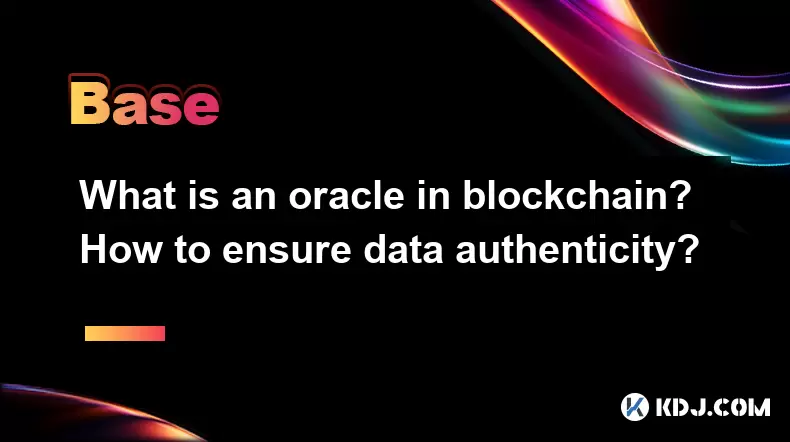
What is an oracle in blockchain? How to ensure data authenticity?
Jun 19,2025 at 08:49pm
Understanding the Role of an Oracle in BlockchainIn the context of blockchain technology, an oracle serves as a bridge between the blockchain and external data sources. While blockchains are inherently secure and decentralized, they cannot access real-world information on their own. Oracles enable smart contracts to interact with off-chain data such as ...
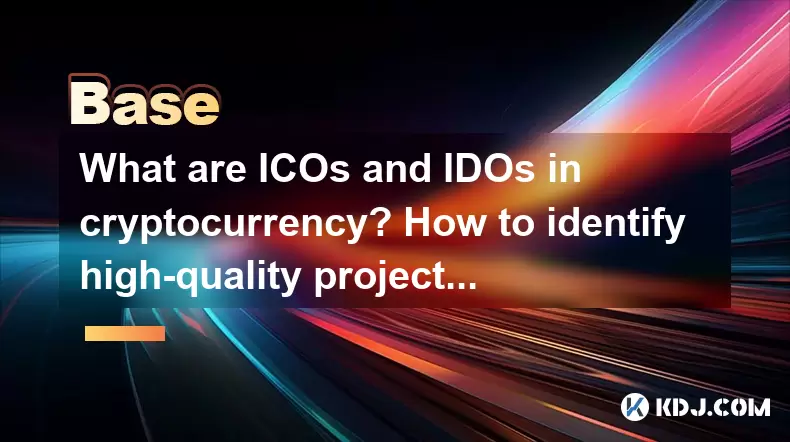
What are ICOs and IDOs in cryptocurrency? How to identify high-quality projects?
Jun 22,2025 at 11:49am
Understanding ICOs in CryptocurrencyInitial Coin Offerings (ICOs) are fundraising mechanisms used by cryptocurrency startups to raise capital for their projects. In an ICO, a company creates and sells its own tokens to investors in exchange for established cryptocurrencies like Bitcoin or Ethereum. The process typically involves the release of a whitepa...
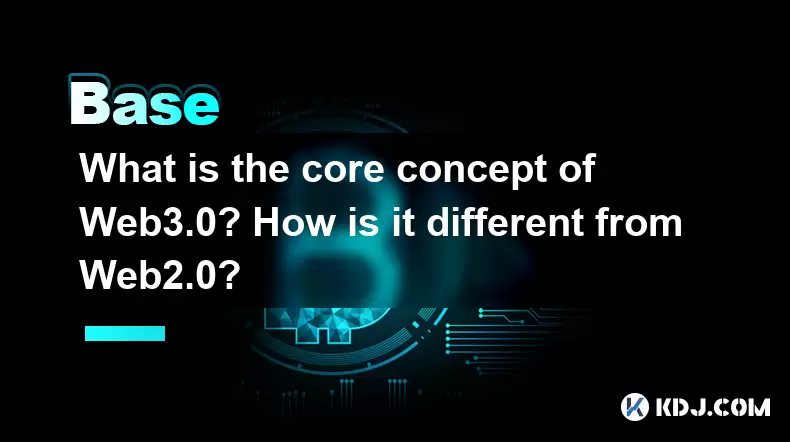
What is the core concept of Web3.0? How is it different from Web2.0?
Jun 21,2025 at 05:56pm
Decentralization as the Foundation of Web3.0The core concept of Web3.0 revolves around decentralization, which fundamentally challenges the centralized architecture of Web2.0. In Web3.0, control and ownership are distributed across a network rather than being held by a central authority or corporation. This is achieved primarily through blockchain techn...
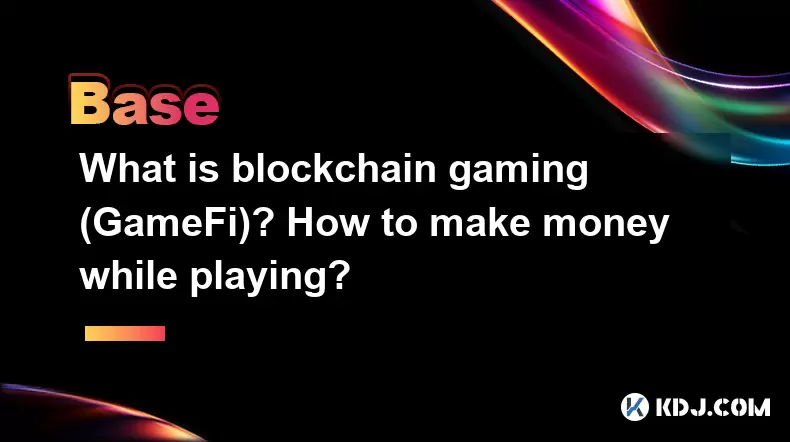
What is blockchain gaming (GameFi)? How to make money while playing?
Jun 20,2025 at 07:56am
Understanding Blockchain Gaming (GameFi)Blockchain gaming, often referred to as GameFi, is a fusion of blockchain technology and video games. It enables players to own in-game assets through non-fungible tokens (NFTs) and earn rewards via cryptocurrencies or token-based systems. Unlike traditional games where items are controlled by centralized develope...
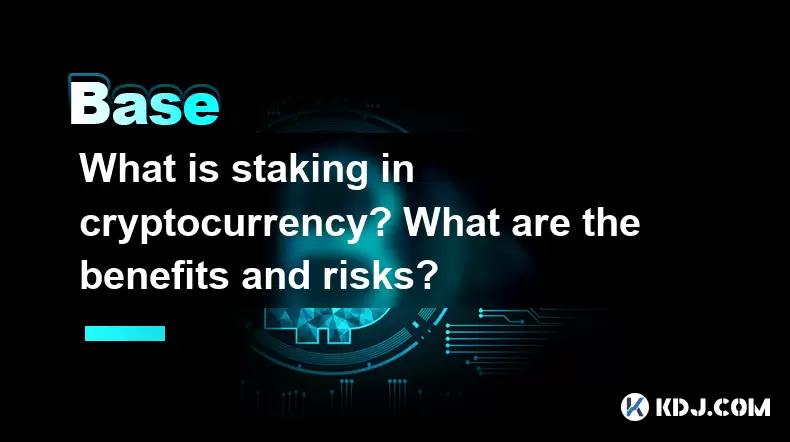
What is staking in cryptocurrency? What are the benefits and risks?
Jun 22,2025 at 10:01am
Understanding the Concept of Staking in CryptocurrencyStaking in cryptocurrency refers to the process of actively participating in transaction validation on a blockchain network that uses a Proof-of-Stake (PoS) consensus mechanism. Instead of miners competing to solve complex mathematical puzzles as in Proof-of-Work systems like Bitcoin, PoS blockchains...
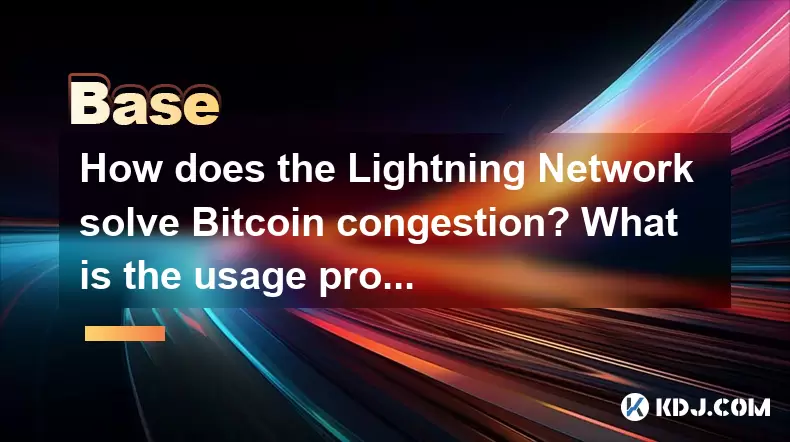
How does the Lightning Network solve Bitcoin congestion? What is the usage process?
Jun 23,2025 at 06:21pm
Understanding Bitcoin Network CongestionBitcoin, as a decentralized digital currency, operates on a blockchain that records every transaction in a public ledger. Each block has a limited size, typically 1 megabyte, which allows for only a certain number of transactions per second (TPS). When the number of transactions increases, the network becomes cong...

What is an oracle in blockchain? How to ensure data authenticity?
Jun 19,2025 at 08:49pm
Understanding the Role of an Oracle in BlockchainIn the context of blockchain technology, an oracle serves as a bridge between the blockchain and external data sources. While blockchains are inherently secure and decentralized, they cannot access real-world information on their own. Oracles enable smart contracts to interact with off-chain data such as ...

What are ICOs and IDOs in cryptocurrency? How to identify high-quality projects?
Jun 22,2025 at 11:49am
Understanding ICOs in CryptocurrencyInitial Coin Offerings (ICOs) are fundraising mechanisms used by cryptocurrency startups to raise capital for their projects. In an ICO, a company creates and sells its own tokens to investors in exchange for established cryptocurrencies like Bitcoin or Ethereum. The process typically involves the release of a whitepa...

What is the core concept of Web3.0? How is it different from Web2.0?
Jun 21,2025 at 05:56pm
Decentralization as the Foundation of Web3.0The core concept of Web3.0 revolves around decentralization, which fundamentally challenges the centralized architecture of Web2.0. In Web3.0, control and ownership are distributed across a network rather than being held by a central authority or corporation. This is achieved primarily through blockchain techn...

What is blockchain gaming (GameFi)? How to make money while playing?
Jun 20,2025 at 07:56am
Understanding Blockchain Gaming (GameFi)Blockchain gaming, often referred to as GameFi, is a fusion of blockchain technology and video games. It enables players to own in-game assets through non-fungible tokens (NFTs) and earn rewards via cryptocurrencies or token-based systems. Unlike traditional games where items are controlled by centralized develope...

What is staking in cryptocurrency? What are the benefits and risks?
Jun 22,2025 at 10:01am
Understanding the Concept of Staking in CryptocurrencyStaking in cryptocurrency refers to the process of actively participating in transaction validation on a blockchain network that uses a Proof-of-Stake (PoS) consensus mechanism. Instead of miners competing to solve complex mathematical puzzles as in Proof-of-Work systems like Bitcoin, PoS blockchains...

How does the Lightning Network solve Bitcoin congestion? What is the usage process?
Jun 23,2025 at 06:21pm
Understanding Bitcoin Network CongestionBitcoin, as a decentralized digital currency, operates on a blockchain that records every transaction in a public ledger. Each block has a limited size, typically 1 megabyte, which allows for only a certain number of transactions per second (TPS). When the number of transactions increases, the network becomes cong...
See all articles

























































































